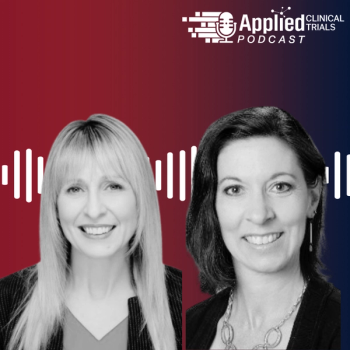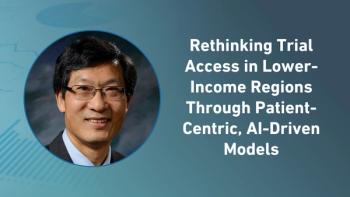
Applied Clinical Trials Supplements
- Supplements-11-02-2003
- Volume 0
- Issue 0
Subject Recruitment and Informed Consent
One of my articles, published in 2000, opened with this statement: "In some ways, clinical drug research is a service that research participants can choose to buy-or not buy. Some participants (consumers) may benefit from buying a product (a new drug); many researchers (salespeople) will be paid for each subject they recruit."1
One of my articles, published in 2000, opened with this statement: "In some ways, clinical drug research is a service that research participants can choose to buy-or not buy. Some participants (consumers) may benefit from buying a product (a new drug); many researchers (salespeople) will be paid for each subject they recruit."1
Table 1 Side effect frequencya
When I submitted that article, at least one reviewer was offended by my suggestion that human subjects could be considered clinical trial consumers and that a sales perspective could be applied to subject recruiting practices. I argued my point with the editor, who obviously agreed to keep it in. Several years later, I believe even more strongly that some aspects of consumer psychology can be applied to both subject recruiting and the informed consent process.
Human subjects are also consumers
Consider potential human subjects as consumers who have to make a clinical trial "buying decision" based on both presented information and missing information. People considering clinical trials make buying decisions. That is, researchers offer an experimental drug or device, and human subjects agree to "pay" for that drug or device with their bodies. A buying transaction (I'll give you my body; you give me an experimental drug) is clearly taking place, although it is usually not viewed in that way.
Seeing human subjects as consumers of experimental drugs or devices means that some elements of consumer psychology will apply to the consent process, just as those elements apply to other buying decisions. For this analysis, I relied on marketing articles.2,3 Although they apply to more traditional areas of market research, the articles contain research findings, concepts, and strategies that can be reinterpreted for use in clinical trial recruiting and informed consent processes.
How consumers make decisions
Neither clinical researchers nor bioethicists are trained in consumer psychology, so their perspectives on informed consent are limited to the areas in which they are trained. But consumer psychology does offer some important insights into the informed consent process, especially when trying to understand why people decide to "buy" a clinical trial.
Making decisions with incomplete information. One of the most important issues is how consumers make buying decisions when information is missing about the products or services in which they're interested. As prospective subjects, consumers usually have incomplete information about clinical trials, so they make choices by comparing detailed information available on some clinical trial features, with only partial information on other features.
Consider the risk descriptions found in most consent forms. It's not unusual to find lists of "common" and "uncommon" risks, or a list of "foreseeable" risks, or a statement such as "You may experience all, some, or none of the following risks." Although general information about risks is part of every consent form, vital risk definitions are usually missing from that description. For example, a study of 200 undergraduates compared their risk estimates of side effects for prescription drugs with European Directive (EU) guidelines (Table 1).4
Although sponsors and researchers may think of "common" risks as those affecting 1%-10% of patients taking a drug, consumers may think that almost half of patients taking a drug will have that common risk! No wonder only a small percentage of people eligible for clinical trials agree to participate. Although risks may be listed, they're usually not defined-a list of risks is not a definition of risks. So it shouldn't be surprising that most people grossly overestimate the likelihood of risks in a clinical trial. If the sponsor fails to define risk frequency, potential subjects will define risks in their own idiosyncratic ways.
Researchers don't know how consumers make choices with incomplete information. When subjects are being recruited for a clinical trial, they are pretty much left to their own cognitive processes to mentally compare clinical trial attributes with standard treatment attributes. That's an inefficient way to make buying decisions. If you want to buy a computer, you might look for a comparison (online or in print) of the features, advantages, and benefits of several computers that you are considering. In the same way, researchers can give consumers a summary of features, advantages, and benefits of both clinical trials and standard treatment. By helping potential subjects to consider more comparative information than they currently receive, the summary can help those consumers make more informed decisions.
Too many elements to process. FDA requires that many elements be covered in a typical consent process. Combining the 14 required, 6 optional, and perhaps 5 forthcoming HIPAA elements, consumers can be faced with 14-25 features to consider. That's simply more than the human brain can adequately process. Even so, instead of simply presenting all 14-25 elements in a lengthy-often unreadable-consent form, researchers could present a comparative summary of clinical trials and standard treatment features as an adjunct to the consent form.
Table 2 summarizes what such a summary might look like. For the sake of simplicity I've tried to briefly describe the features in as few words as possible. And while Table 2 summarizes features, it does not identify advantages or benefits for appropriate features. Because the advantages and benefits of a clinical trial vary from study to study, sponsors and researchers should add relevant advantages and benefits where they would fit in most appropriately.
Consumers can compare 14-25 attributes to decide whether they want to opt for standard treatment or to receive an experimental treatment in a clinical trial. From the standpoint of information overload, that is simply more than the average person can mentally process. To make that cognitive task more manageable, most potential subjects will probably try to reduce the number of attributes that they consider to just a few, and ignore the rest. Although "feature overload" can be controlled in product advertisements, clinical researchers do not have the option of reducing the number of required elements to the more cognitively manageable number of perhaps three to five features.
As potential subjects try to compare all the elements during the informed consent process, the complexity of making a choice will increase. They will rely even more strongly on simplified processing strategies and the common attributes of both clinical trials and standard treatments. With the current informed consent procedures, consumers may pay attention to the risks involved in a clinical trial, but ignore the risks involved in standard treatment-or they may feel overwhelmed by all the information and simply decide not to be in a clinical trial.
Note that the decision to avoid participating may have little to do with the merits of a clinical trial, but may simply reflect the person's inability to make a decision based on all of the verbal and written information they've been given. To protect their self-esteem, most people will not tell researchers that they've decided not to be in a clinical trial because they can't understand all the required information.
Omission neglect-you can't use what you don't see.2 People are usually unaware of missing information: It's hard to see what isn't there. Because of this, people tend to form strong beliefs on the basis of weak evidence. So subject recruiting efforts may be sabotaged by information that's not presented, and potential subjects may be relying on other (weak) evidence to make a decision. People also tend to focus on information that supports their beliefs rather than on evidence that contradicts their beliefs. Consumers who already have negative ideas about clinical trials may be very resistant to change, even when researchers provide them with positive information about clinical trials in general or the specific clinical trial for which they are being recruited.
TABLE 2 Standard treatment v. clinical trial
Overcoming inherent biases isn't easy, but one strategy that seems useful is helping consumers become more aware of what's missing in their decision-making process. Investigators can do this by having prospective subjects consider a wide range of attributes that evaluate clinical trials and standard treatments on different dimensions (see Table 2). Another way is to ask people to rank the importance of each element of informed consent. Although consent forms (and the consent discussion) tend to follow the FDA-required elements in sequence, it is not known whether prospective subjects actually evaluate clinical trials in that sequence. For example, based on consumer feedback, Table 2 could be redesigned in rank order, from most important element to least important element. That could give sponsors, researchers, and consumers a way to make the consent process more relevant to the consumer's way of thinking.
Sponsors and researchers have considerable control over the information provided-and not provided-to prospective subjects, and the manner in which that information is presented. Clinical trial information can be made available not only in the informed consent process (including the informed consent form), but through supplemental materials that accompany the consent form, and by providing access to newspaper articles, television reports, drug company and clinical trial Web sites, and other information sources.
In these ways, sponsors can carefully design the information given to prospective subjects so that missing information doesn't become a reason for consumers to avoid clinical trials completely.
As an example of missing information consider the May 2002 Department of Health and Human Services Inspector General's report on "Clinical Trial Web Sites. A Promising Tool to Foster Informed Consent."5 This report reviewed 22 clinical trial Web sites, enrolling 10%-15% of subjects in particular trials and 110 clinical listings from those sites. It concluded that most of those clinical trial listings left out information important to potential human subjects. Of the 110 clinical trials listings, 29 described the benefits of being in a clinical trial (often convenience such as parking, and incentives such as monetary compensation), but not one had any information about human subject risks. For consumers visiting those web sites, the information available to them is incomplete, at best. Yet, research shows that people may include missing information in their decision-making process.
Although Web site developers may intentionally withhold information about risks, fearing that potential subjects may be frightened enough to avoid seeking out more information or that consumers can best be "sold" by listing the benefits of being in a clinical trial, consumers may interpret missing information to mean that the Web site or clinical trial has something to hide, and cannot be trusted. Or consumers may jump to their own conclusions about research risks based not only on clinical trial Web sites, but on vivid media reports of clinical trials gone wrong.
By withholding-or making less visible-the values of certain attributes (such as risks), Web site developers can increase the perceived importance of some attributes (a cure, possible benefits, compensation, free parking) over others (health risks, financial considerations). Such omissions come with some risk, however, including the potential for government reports, criticism by bioethicists, and consumer mistrust.
Still, it is possible for sponsors to construct Web sites and media materials that that increase the attractiveness of the clinical trial through more detailed comparisons with standard treatments, and increase the likelihood of subject participation by minimizing the amount of missing information that prospective subjects must interpret.
References
1. M. Hochhauser, "The Informed Consent Form: Document Development and Evaluation,"
Drug Information Journal
, 34(4) 1309-1317 (2000).
2. F.R. Kardes and D.M. Sanbonmatsu, D.M., "Omission Neglect. The Importance of Missing Information," Skeptical Inquirer, 27(2) 42-46 (2003).
3. R. Kivetz and I. Simonson, I., "The Effects of Incomplete Information on Consumer Choice," Journal of Marketing Research, XXXVII, 427-448 (2000).
4. D.C. Berry, P. Knapp, and D.K. Raynor, "Provision of information about drug side-effects to patients," The Lancet, 359(9309) 853-854 (2002).
5. Office of the Inspector General, Clinical Trial Web Sites. A Promising Tool to Foster Informed Consent. (Department of Health and Human Services, Washington, DC, 2002).
Articles in this issue
about 22 years ago
Guidelines for Obtaining Informed Consent for Clinical ResearchNewsletter
Stay current in clinical research with Applied Clinical Trials, providing expert insights, regulatory updates, and practical strategies for successful clinical trial design and execution.






.png)



.png)



.png)
.png)
